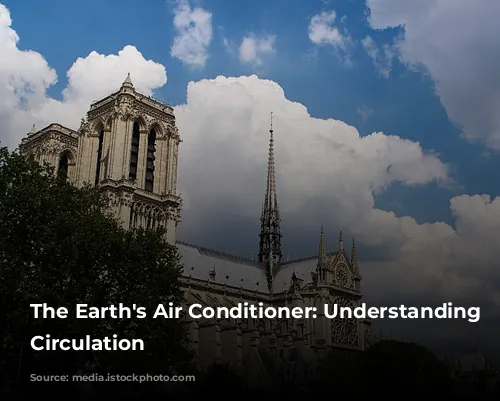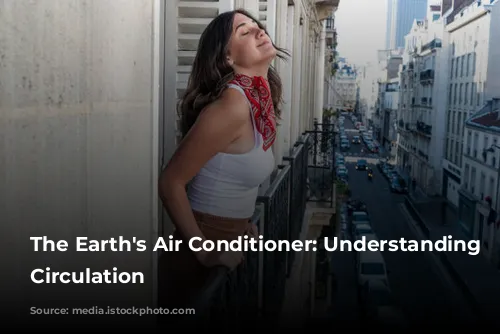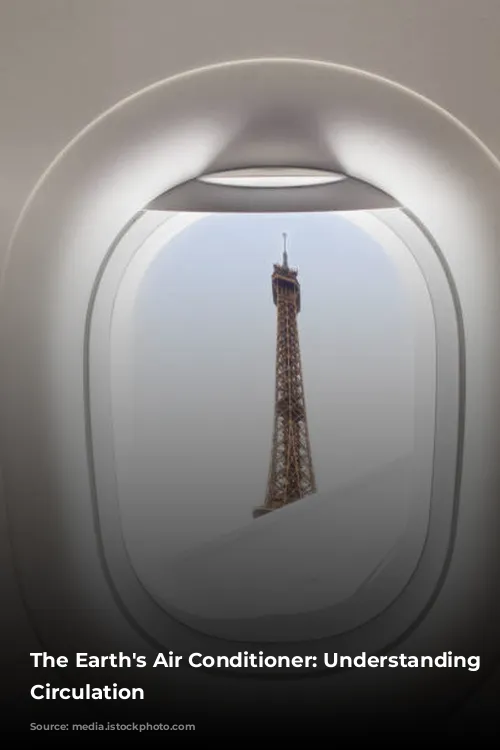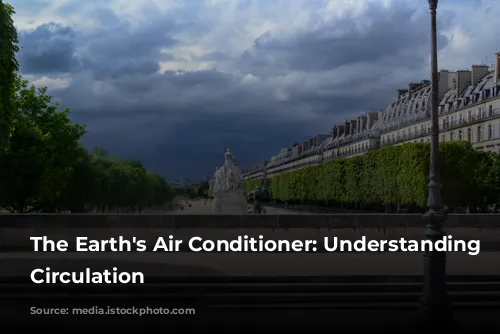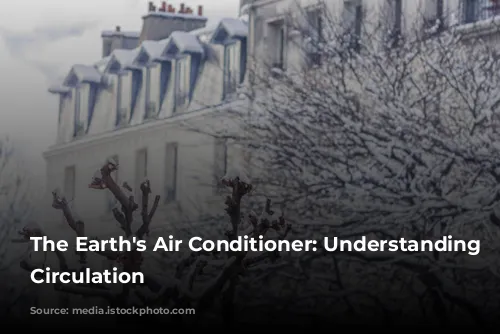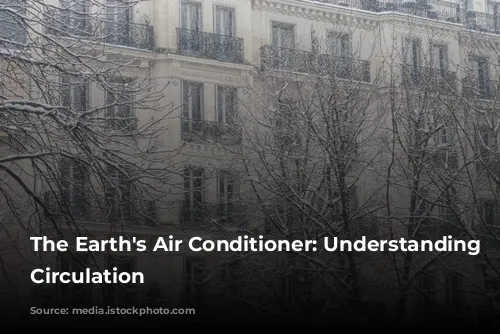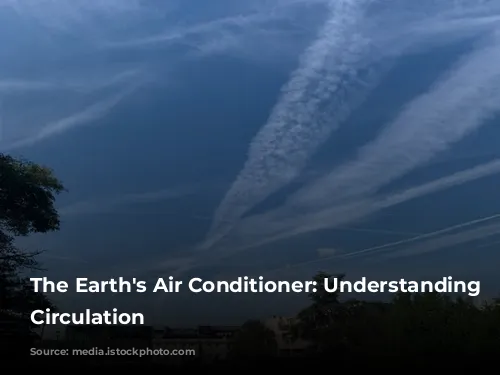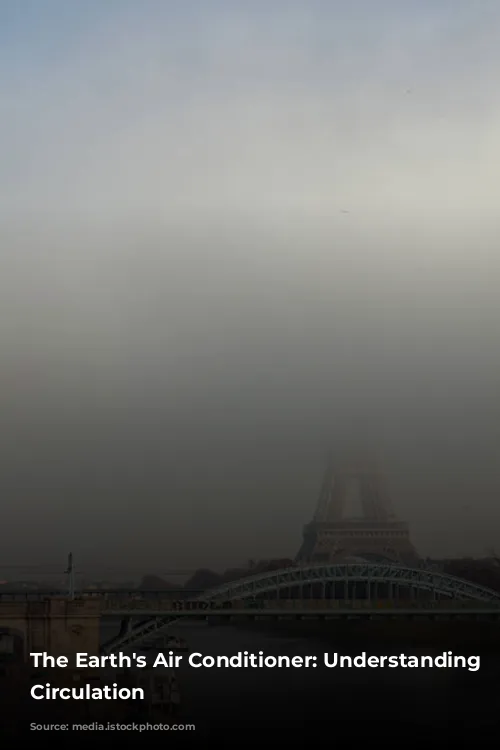Imagine our planet as a giant, spinning ball. The sun’s energy heats different parts unevenly, creating a vast temperature difference between the equator and the poles. But how does this heat get redistributed? This is where the global atmospheric circulation comes in, acting like a natural air conditioning system for Earth.
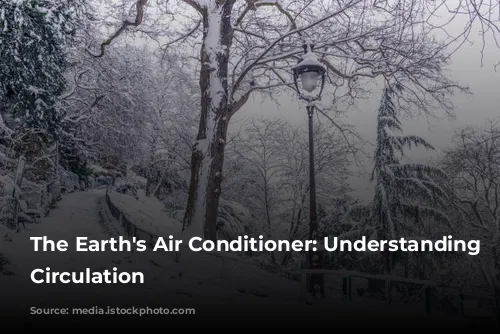
The Three Cells of Circulation
Within the troposphere, the lowest layer of our atmosphere, air circulates in three distinct cells: the Hadley cell, the Ferrel cell, and the Polar cell. These cells work together to balance out the Earth’s temperature.
The Hadley Cell: The Engine of Circulation
The Hadley cell is the largest and most powerful cell. It extends from the equator to about 30 degrees north and south. Imagine warm, moist air rising near the equator, creating an area of low pressure and thunderstorms. This air then flows towards the poles, cools, and descends around 30 degrees latitude, forming areas of high pressure. These high-pressure areas are often associated with deserts, like the Sahara.
The Ferrel Cell: The Gear of Circulation
Next comes the Ferrel cell, a middle cell that behaves like a gear, moving in the opposite direction to the Hadley and Polar cells. It brings warm, moist air from the tropics towards the poles. This air then cools and rises around 60 degrees latitude, creating areas of low pressure, and then flows back towards the tropics. The Ferrel cell is responsible for the unsettled weather we often experience in the UK.
The Polar Cell: The Smallest Cell
The Polar cell is the smallest and weakest cell, extending from the poles to about 60 degrees latitude. It brings cold, dry air from the poles towards lower latitudes. This air then descends and flows back towards the poles, completing the circulation.
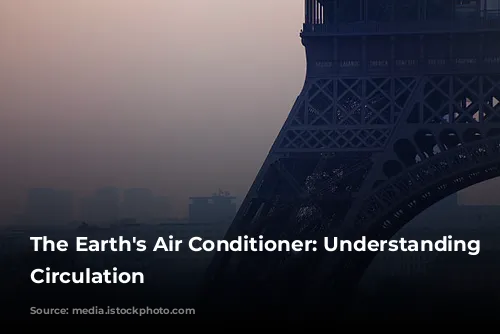
The Influence of the Coriolis Effect
As the Earth spins, it creates a force known as the Coriolis effect, which deflects moving objects, including air, to the right in the Northern Hemisphere and to the left in the Southern Hemisphere. This effect significantly influences the direction of winds within each circulation cell. For instance, the Coriolis effect explains why the prevailing winds over the UK are westerly and south-westerly.
The Jet Streams: Fast Rivers in the Sky
At the boundaries of the circulation cells, jet streams form – fast-flowing rivers of air that travel horizontally around the globe. These jets are crucial for transporting heat and moisture around the planet, influencing our weather patterns.

Weather Patterns: A Result of Circulation and the Jet Streams
The polar front jet stream, located at the boundary between the Ferrel and Polar cells, is particularly important for the UK’s weather. It acts like a conveyor belt, carrying weather systems across the Atlantic, often bringing unsettled conditions. During summer, the jet stream tends to shift north, bringing more settled weather to the UK. However, in winter, it moves south, increasing the risk of unsettled weather, even snow.

The Global Conveyor Belt of Energy
The combined effects of the three circulation cells, the Coriolis effect, and the jet streams result in a massive global circulation system, acting like a conveyor belt that transfers heat from the tropics towards the poles. This constant exchange of energy helps maintain a relatively stable climate on Earth.
In conclusion, the global atmospheric circulation plays a vital role in regulating Earth’s temperature and shaping weather patterns. It’s a complex system of interconnected cells, driven by the sun’s energy and the Earth’s rotation, constantly moving heat and moisture around the globe. Understanding this system is crucial for comprehending the intricate dynamics of our planet’s climate.
